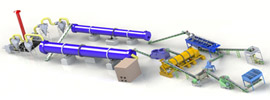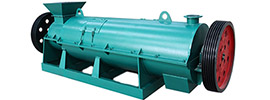The duration of organic fertilizer’s efficacy depends on factors such as raw material type, decomposition conditions, soil environment, and crop demand. Generally, its effects can be categorized into short-term (1–3 months), medium-term (3–6 months), and long-term (6+ months) stages, though specific durations require assessment based on real-world conditions. Below is a detailed analysis:
I. Key Factors Influencing the Efficacy of Organic Fertilizer
- Raw Material Type and Decomposition Rate
- Easily decomposed materials (e.g., animal manure, plant residues): Rich in readily degradable organic matter (e.g., sugars, proteins), these are rapidly broken down by microorganisms, releasing nutrients intensively but with shorter efficacy (typically 1–3 months).
- Slowly decomposed materials (e.g., humus, charcoal, bone meal): Contain lignin, cellulose, or minerals that decompose gradually, sustaining nutrient release for 6 months to several years, though initial availability is low.
- Composite materials (e.g., compost, biogas slurry): Blend different raw materials to balance decomposition rates, providing medium-term efficacy (3–6 months).
- Environmental Conditions
- Temperature and humidity: High temperatures and moisture accelerate microbial activity, shortening the efficacy period; cold, dry conditions prolong decomposition.
- Soil pH: Acidic or alkaline soils may inhibit microbial activity, affecting decomposition efficiency.
- Soil aeration: Aerobic conditions promote decomposition, while anaerobic environments (e.g., paddy fields) slow nutrient release.
- Crop Demand and Application Methods
- Crop type: Short-lifecycle vegetables require rapid nutrient release, whereas long-lifecycle fruit trees benefit from sustained-release fertilizers.
- Application depth: Deep placement (10–20 cm) reduces nutrient volatilization and extends efficacy; surface application risks loss via leaching or photodegradation.
II. Phased Characteristics of Organic Fertilizer Efficacy
- Initial Stage (1–3 Months)
- Rapid-release phase: Easily decomposed organic matter is converted by microbes into ammonium nitrogen, phosphorus, potassium, and other readily available nutrients, meeting early crop growth needs.
- Applications: Base fertilizer before sowing, top-dressing during seedling stages.
- Medium Stage (3–6 Months)
- Stable-release phase: Moderately decomposable organic matter (e.g., hemicellulose) gradually transforms into effective nutrients, ensuring balanced supply.
- Applications: Top-dressing during peak growth periods.
- Long-term Stage (6+ Months)
- Slow-release phase: Slowly decomposed organic matter (e.g., humus) continuously improves soil structure, enhances water/nutrient retention, and indirectly provides nutrients.
- Applications: Long-term soil improvement for perennial crops (e.g., fruit trees, tea plants).
III. Efficacy Comparison of Different Organic Fertilizers
| Organic Fertilizer Type |
Efficacy Duration |
Key Features |
| Animal manure (e.g., chicken) |
1–3 months |
High nitrogen content, rapid decomposition, but risk of root burn if uncomposted. |
| Plant residues (e.g., straw) |
3–6 months |
High C/N ratio, requires additional nitrogen for decomposition; improves soil structure. |
| Compost/matured fertilizer |
3–6 months |
Balanced decomposition, comprehensive nutrients, high safety. |
| Green manure (e.g., milk vetch) |
2–4 months |
Rapid decomposition after incorporation, boosts soil organic matter. |
| Bone meal/mineral fertilizers |
6 months to years |
High in phosphorus and calcium, extremely slow decomposition; ideal for long-term soil improvement. |
IV. Practical Recommendations
- Combined application: Mix rapid-release (e.g., animal manure) and slow-release (e.g., compost) fertilizers to address both short-term needs and long-term soil health.
- Staged fertilization: Apply fertilizers with varying efficacy periods during base and top-dressing stages according to crop growth cycles.
- Environmental optimization: Use mulching, regulated irrigation, or other methods to control soil temperature and moisture, promoting decomposition.
- Regular monitoring: Conduct soil tests to track nutrient levels and avoid over-fertilization, which can cause waste or pollution.
Summary
The efficacy of organic fertilizer is not fixed but dynamically influenced by raw materials, environmental factors, and crop requirements. By selecting appropriate materials, optimizing application methods, and aligning with soil and crop needs, its long-lasting, eco-friendly benefits can be maximized.
This translation preserves technical precision while adapting phrasing to natural English conventions in agricultural contexts.
 Send us a Email
Send us a Email Wulong Industrial Cluster
Wulong Industrial Cluster Have any question?
Have any question?



















